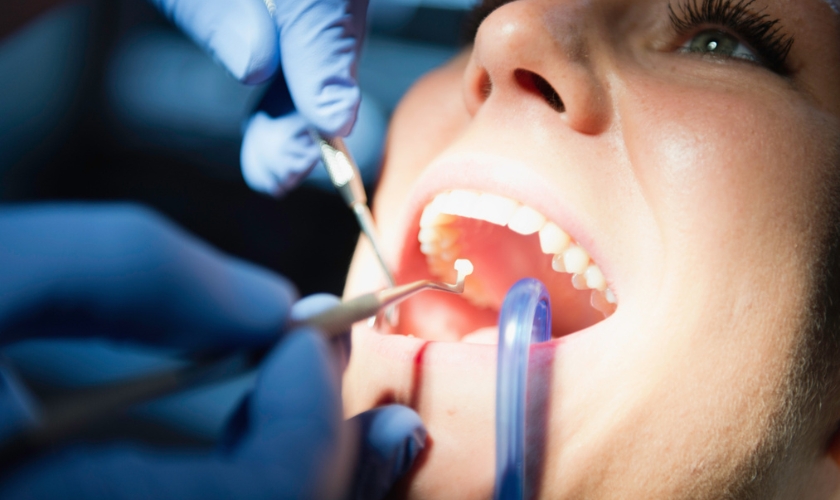A radiant smile is a true reflection of good oral health, and dental fillings play a crucial role in maintaining it. However, the discomfort that sometimes follows this common dental procedure can be a concern for many. The good news is that with a few simple strategies, you can significantly reduce post-filling pain and get back to flashing that healthy grin. In this guide, we’ll explore ten expert tips that go beyond the usual advice. Whether you’re a seasoned dental veteran or a first-timer, these insights will make your recovery smoother and more comfortable.
Choose the Right Filling Material
The first step in minimizing post-filling discomfort is to choose the right filling material. Discuss your options with your dentist, considering factors like durability, aesthetics, and, importantly, sensitivity. Some materials are less likely to cause post-filling pain, and your dentist can help you select the best option for your specific needs.
Opt for Tooth-Colored Fillings
Tooth-colored fillings not only blend seamlessly with your natural teeth but also tend to cause less post-filling pain compared to traditional amalgam fillings—the composite material bonds more effectively with the tooth, reducing the chances of sensitivity.

Communicate with Your Dentist
Effective communication with your dentist is a crucial aspect of ensuring a comfortable recovery from dental fillings. Share any concerns or past experiences with post-filling pain, as this information helps your dentist tailor their approach to your specific needs. If you’ve had sensitivity issues in the past, your dentist can take extra precautions or recommend desensitizing measures. Open dialogue fosters a collaborative relationship, allowing you to be actively involved in your dental care and ensuring that your dentist has a comprehensive understanding of your dental history.
Consider Desensitizing Toothpaste
Desensitizing toothpaste is a valuable tool for individuals prone to tooth sensitivity. Begin using this specialized toothpaste a few weeks before your scheduled filling procedure. The active ingredients in desensitizing toothpaste, such as potassium nitrate or strontium chloride, work to block nerve signals and reduce sensitivity. By incorporating desensitizing toothpaste into your oral care routine, you can build up a protective layer and minimize the risk of post-filling pain. Continue using the toothpaste after the procedure to manage any residual sensitivity and promote a faster, more comfortable recovery.
Embrace Cold Compress Therapy
Cold compress therapy is a simple yet effective method for reducing inflammation and numbing the treated area after dental fillings. During the first 24 hours post-procedure, apply a cold compress to the outside of your cheek near the treated tooth. The cold temperature constricts blood vessels, helping to minimize swelling and alleviate pain. Ensure that you use a thin cloth or towel to protect your skin from direct contact with the cold pack. This natural and non-invasive approach can significantly enhance your comfort during the initial stages of recovery.
Choose Soft Foods
Adjusting your diet to include soft, easy-to-chew foods is a practical step in minimizing stress on the treated tooth and reducing post-filling discomfort. Opt for foods that require minimal chewing, such as soups, yogurt, mashed potatoes, and smoothies. These choices not only prevent unnecessary strain on the dental work but also provide the necessary nutrients for healing. Avoiding hard, crunchy, or sticky foods for the first few days post-filling ensures a smoother recovery process and allows the treated tooth to settle without added pressure.
Over-the-Counter Pain Relief
Over-the-counter pain relievers can be a valuable ally in managing post-filling discomfort. Non-prescription options like ibuprofen or acetaminophen can help alleviate pain and reduce inflammation. However, it’s essential to follow your dentist’s recommendations and adhere to the recommended dosage. Consulting with your dentist or healthcare provider before taking any medication ensures that you choose the most appropriate option based on your medical history and overall health. These pain relievers can be particularly beneficial during the initial stages of recovery, providing relief while your body adjusts to the dental work.
Stay Hydrated
Proper hydration is essential for overall health and can significantly contribute to a smooth recovery after dental fillings. A dry mouth can contribute to oral discomfort, so by ensuring you drink enough water, you provide moisture to the oral tissues and enhance the healing process. Aim to consume the recommended daily amount of water and consider using sugar-free gum or lozenges to stimulate saliva production if needed.
Avoid Extreme Temperatures
Extreme temperatures can trigger sensitivity and discomfort, especially during the initial stages of recovery after dental fillings. To minimize the risk of exacerbating any post-filling pain, avoid consuming hot or cold foods and beverages. Opt for lukewarm or room temperature options instead. This precaution is particularly important for individuals with heightened tooth sensitivity.
Follow Post-Procedure Instructions
Your dentist will provide specific post-procedure instructions tailored to your case. It’s crucial to follow these guidelines diligently to ensure a smooth and successful recovery. Instructions may include:
- Dietary restrictions.
- Advice on oral hygiene practices.
- Recommendations for any prescribed medications.
If your dentist schedules follow-up appointments, make sure to attend them for monitoring and adjustments if necessary.
A pain-free recovery after dental fillings is within reach with these ten expert tips. From selecting the right filling material to simple lifestyle adjustments, each strategy contributes to a smoother healing process. Remember, effective communication with your dentist is paramount, ensuring that your unique needs are addressed. So, flash that post-filling smile confidently, knowing that you’ve taken the necessary steps to minimize any potential discomfort.




